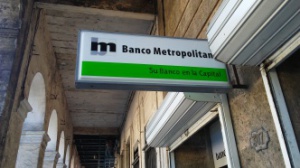After the appointment of Miguel Diaz- Canel Bermudez as President of the Council of State and Ministers, the new head of state will have the task of initiating the process to unify Cuba’s dual currencies under the watchful eye of Raul Castro and the rest of old guard of the Cuban Communist Party (PCC). One of the many questions that we have is: What are the costs to such an urgent economic reform?

The most controversial decision that the government will make implies a broad economic reform that many in the country’s leadership are reluctant to undertake. Even though their policies are responsible for the terrible state of the nation. Ironically, despite their reluctance, the country’s leaders have acknowledged the magnitude of their economic incompetence but have done little to address the issue.
Rogelio Torras and Juan Ferrán, authors of the article titled Engañoso Caballero Don Dinero (Deceitful Man: Mr. Money) argue:
“Why worry about a possible increase in prices for basic goods due to a devaluation when issues, such as 56% of agricultural land in Cuba not being cultivated, are not resolved first?”
The same concept can be applied to the networks of state run enterprises. In Havana alone, it is estimated that 38% and 40% of these state run enterprises will disappear due to their inefficiencies, in the event of an eventual devaluation of the current exchange rate 1-1 between the Cuban peso and the US dollar. Moreover, 60% of these entities were classified as really bad or deficient by different audits
In response to the question: What does the devaluation represent?, Juan Triana responds:
“The magnitude of a devaluation is decisive because the devaluation is already expressed in the de facto increase in prices”.
For those dependent on state salaries, the unification of the Cuban Peso and the Cuban Convertible Peso (CUC) will affect them greatly. For the 5 million tourists that visit Cuba each year, a unified currency will be considered overvalued; their purchasing power will be diminished. Not only would tourists and state workers be affected by a unified currency but so would Cubans receiving remittances from abroad. It is estimated that $3 billion in remittances were sent to the island in 2017. These remittances are indispensable to the country’s economy. It is also worth mentioning that monopolistic foreign exchange shops receive more than 1.5 billion dollars a year.
When it comes to implementing the elimination of the dual currency system, many experts propose letting the exchange rate float, so it evens out the supply and demand curve. Economist Jorge Barrera estimates that it will take at least 2 years for the exchange rate to stabilize and establish a more permanent exchange rate to the dollar.
From the D-day until the result of the currency unification, few analysts dare to estimate some figures:
- Various experts, like Humberto Perez, suggest a 15/1 rate, shortening the difference between the CUP and CUC
- Ferran and Torras opt for the double segmentation with letting the CADECA rate float freely. The business rate can be established at 5/1 initially that would be subject to change according to economic performance
- Other experts including Barrera estimate that the rate could reach 25/1 without any regulation.
Referring to the consequences, Humberto Perez mentions in his ECT blog that:
“Any abrupt changes will affect the system in its entirety: subsidies, taxes, credit, changes in the banking system, allocation of resources, purchasing power, foreign trade, tourism, personal income, etc. for this, there may be time to adjust to the currency unification […] Pragmatism and cautious measures must be applied to these moments in relation to CADECAS rates. That way there is no confusion among the population and the devaluation does not affect the value of the remittances and the tourism industry which are already threatened by Trump’s policies”.
The status quo that was determined by the absurd concept of a dual currency system will have to be totally changed. Today like never before, our leaders are obligated to fulfill the fidelista slogan “change whatever needs to be changed”.
Waiting for the defining moment, he makes the following reflection:
“While no actions are taken to resolve the currency distortions, the allocation of resources is likely to remain inefficient, the material grounds of the workers’ political power will remain diminished, economic growth will remain far below its potential and economic development will not materialize”. (ECT, February 2018).

Leave a comment